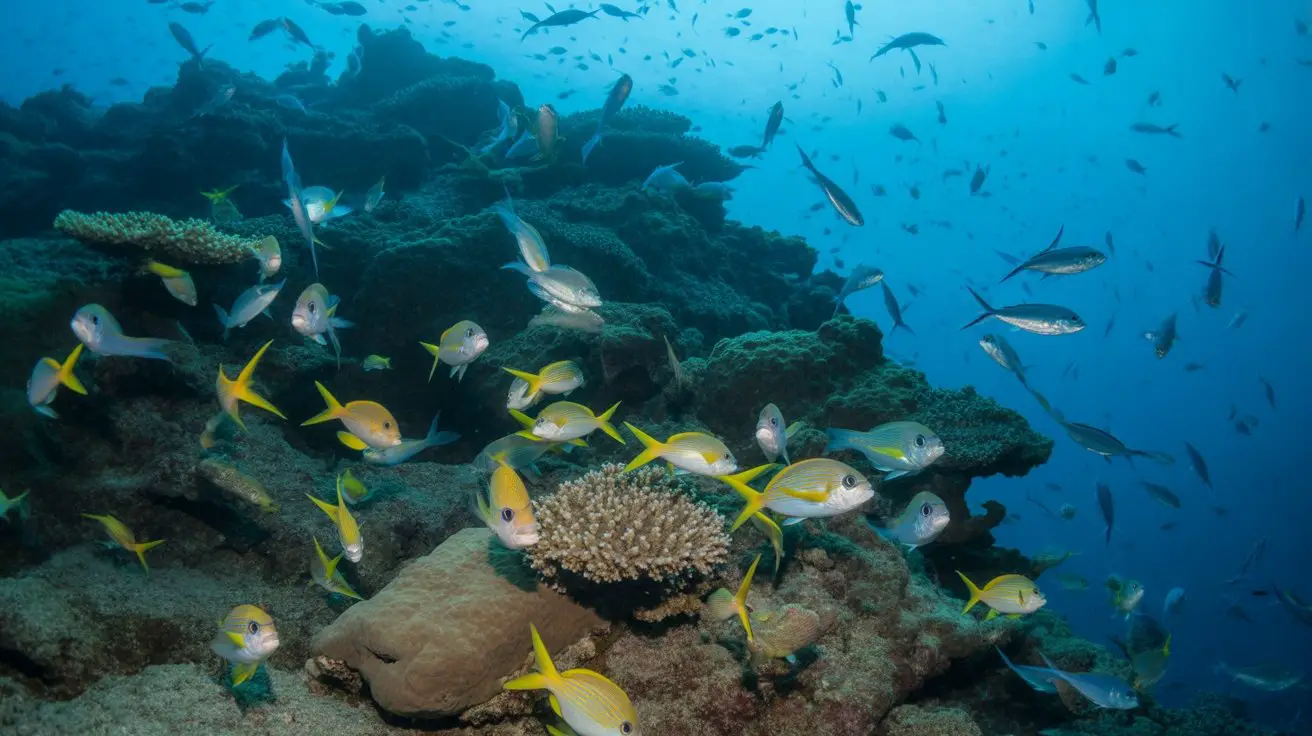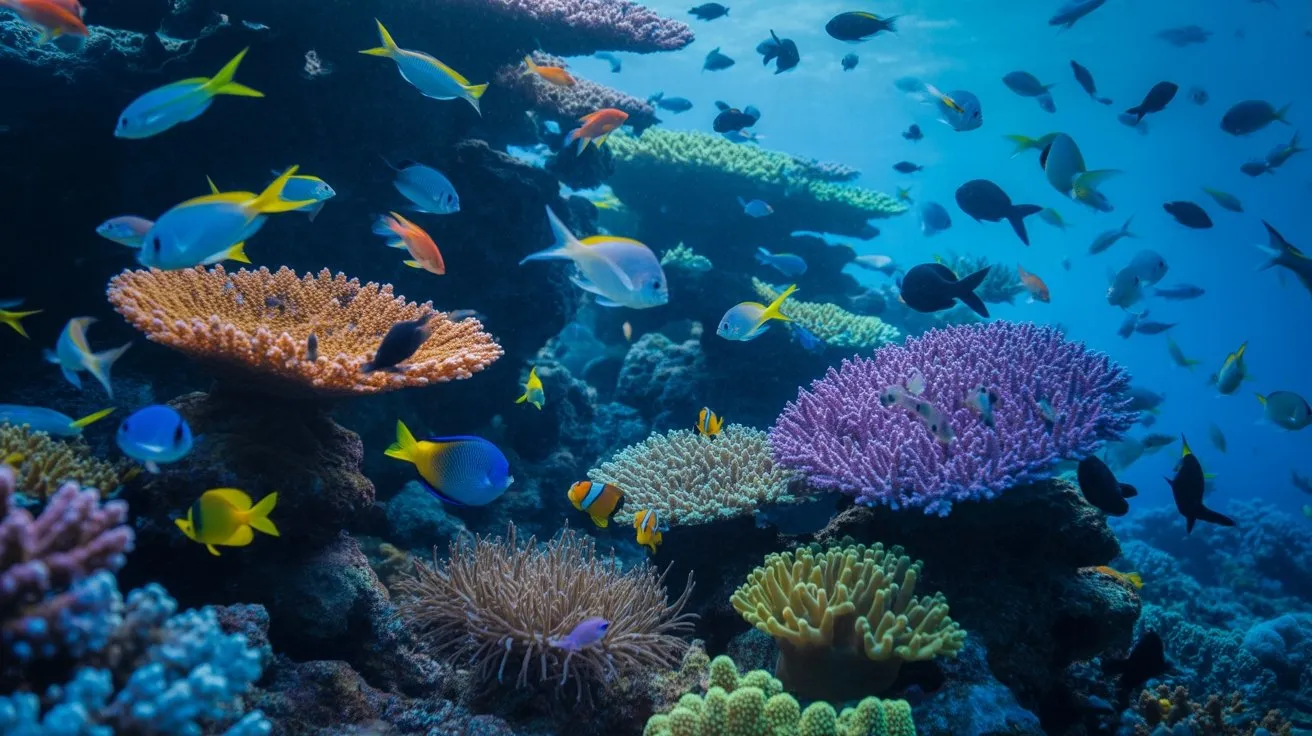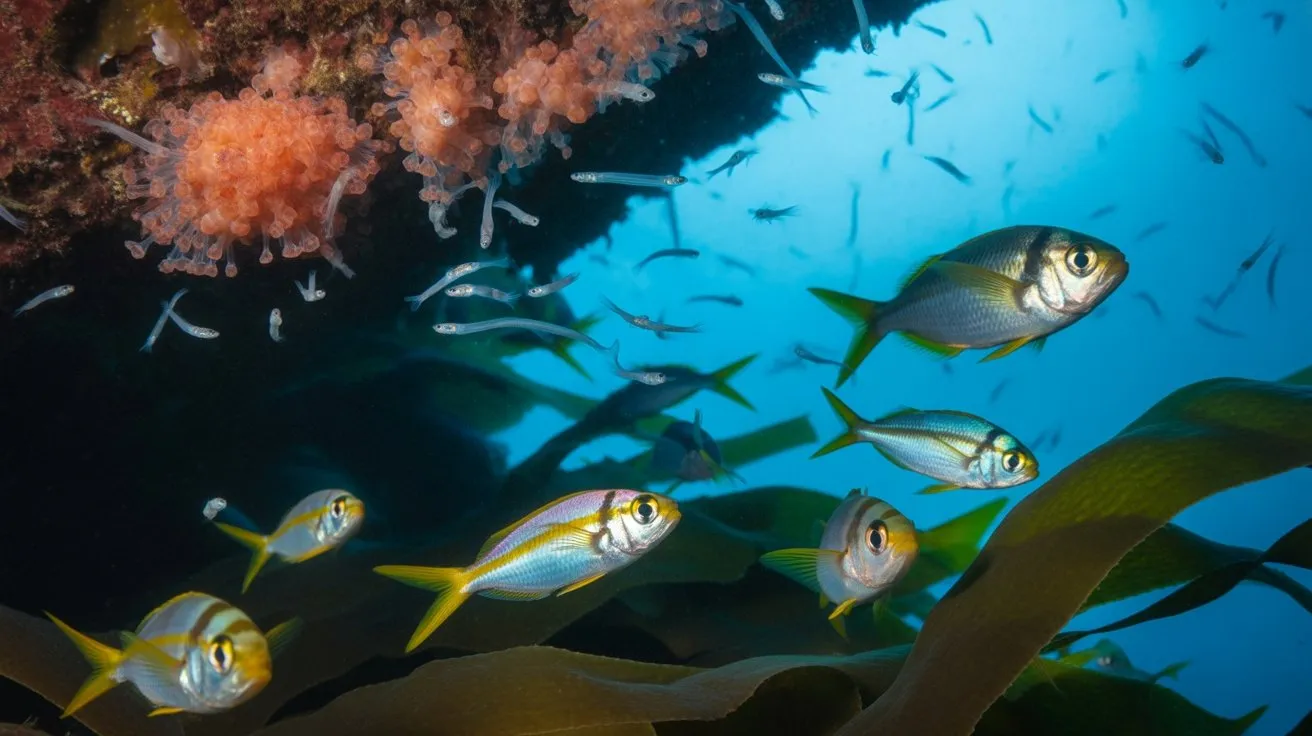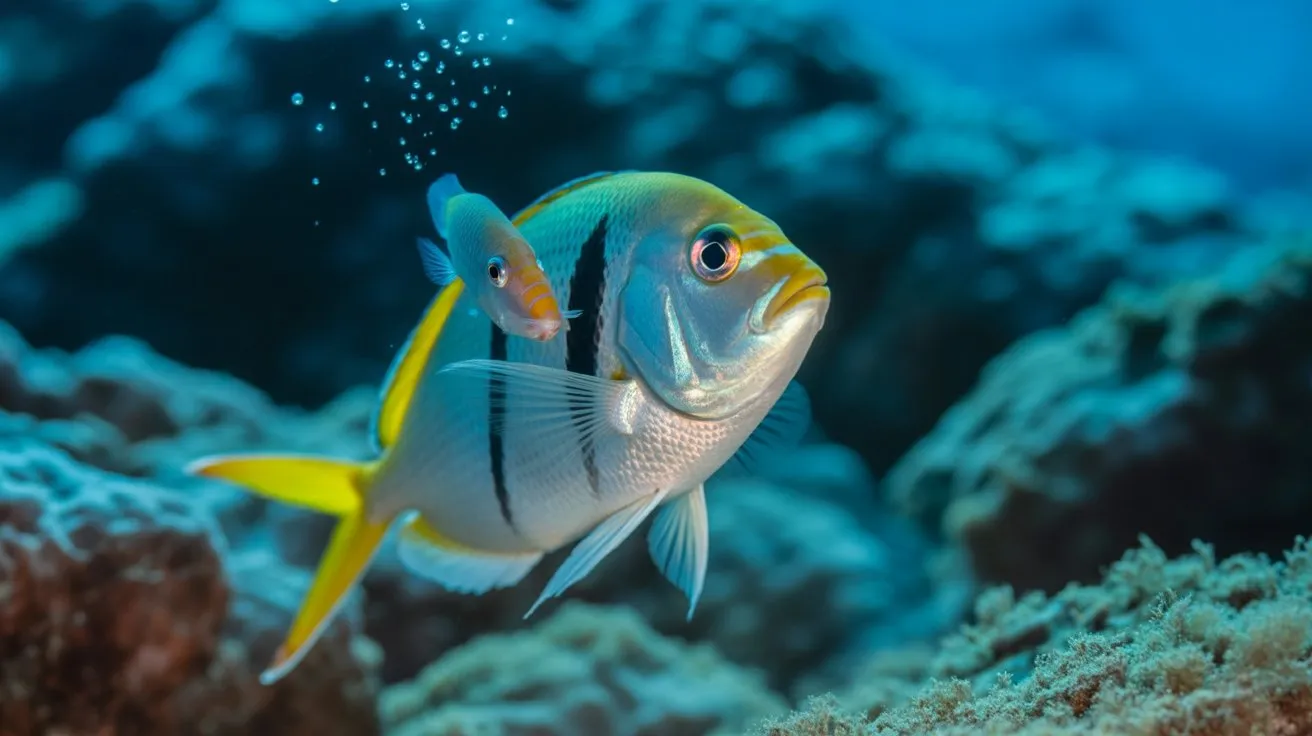You’ll find that reef fish can execute 90-degree turns in milliseconds, while their open ocean counterparts achieve sustained speeds exceeding 70 mph—yet both evolved from similar ancestral forms. These contrasting abilities reflect fundamental differences in body morphology, neural architecture, and metabolic strategies that extend far beyond simple habitat preferences. The physiological trade-offs between maneuverability and speed reveal how environmental pressures shape every aspect of fish biology in ways you might not expect.
Physical Characteristics and Body Structure
While reef fish exhibit compressed, laterally flattened bodies that enable precise maneuverability through coral formations, open ocean fish display streamlined, torpedo-shaped morphologies optimized for sustained high-speed swimming across vast distances.
You’ll notice reef fish possess large, rounded pectoral fins for braking and sharp directional changes, whereas pelagic species feature narrow, sickle-shaped fins reducing drag.
Reef fish typically maintain higher body depth-to-length ratios (0.3-0.4) compared to open ocean fish (0.15-0.25). Their caudal fin structures differ markedly: reef species have truncated or rounded tails for acceleration bursts, while pelagic fish possess deeply forked, lunate tails generating continuous thrust.
These morphological adaptations directly correlate with each environment’s hydrodynamic demands and predator-prey interactions.
Coloration and Camouflage Strategies
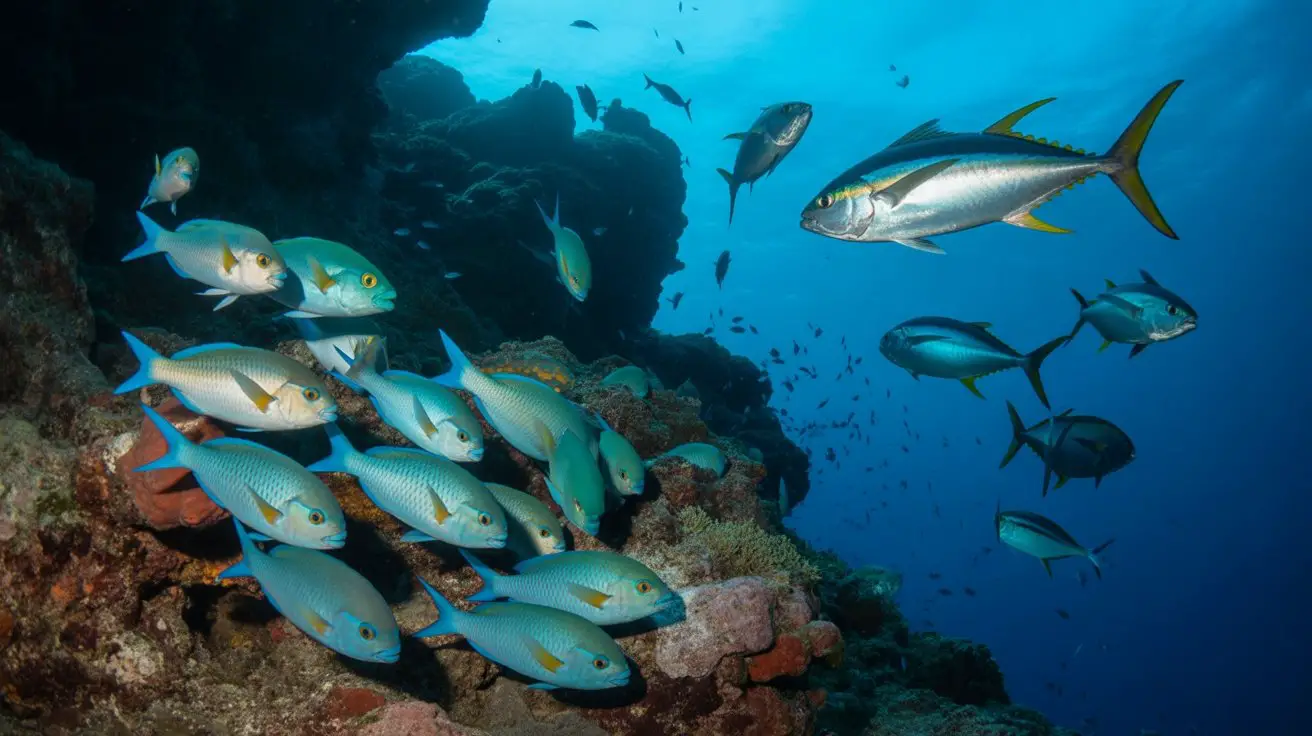
Chromatophores—specialized pigment-containing cells—enable reef and open ocean fish to employ fundamentally different visual strategies for survival.
You’ll observe reef fish displaying vibrant blues, yellows, and oranges that match coral environments. These species use disruptive coloration, breaking up their body outline with bold patterns and contrasting stripes.
Conversely, you’ll find open ocean fish exhibiting countershading—dark dorsal surfaces and light ventral regions. This strategy renders them nearly invisible when viewed from above against deep water or below against sunlit surfaces.
Pelagic species often display silvery flanks that reflect ambient light, creating mirror-like camouflage.
Additionally, you’ll notice many deep-sea fish utilize bioluminescence for communication and predator confusion, while reef species rely primarily on structural coloration and rapid chromatophore adjustments.
Swimming Patterns and Movement Behaviors
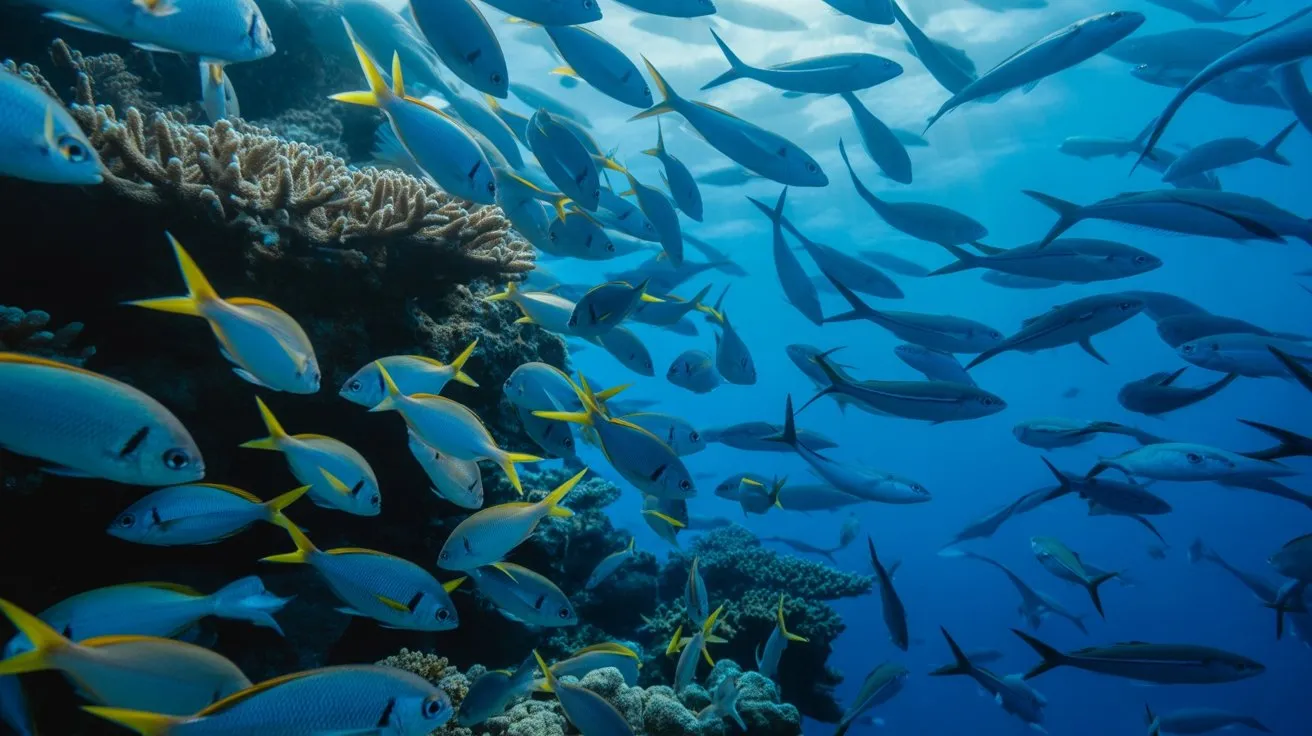
Because habitat constraints fundamentally shape locomotion demands, reef and open ocean fish exhibit distinct swimming patterns optimized for their respective environments. You’ll observe reef fish utilizing precise maneuvering capabilities, employing body-caudal fin propulsion for tight turns around coral formations. They’re adapted for burst swimming, accelerating rapidly to escape predators or capture prey within confined spaces. In contrast, open ocean fish often migrate across vast distances, showcasing their adaptation to open ocean areas that serve as rich feeding grounds.
Open ocean fish demonstrate sustained swimming efficiency through body-thunniform locomotion, maximizing thrust while minimizing energy expenditure during long-distance migrations. You’ll notice their streamlined morphology supports continuous forward motion rather than agility.
| Characteristic | Reef Fish | Open Ocean Fish |
|---|---|---|
| Primary Movement | Burst acceleration | Sustained cruising |
| Propulsion Mode | Body-caudal fin | Thunniform |
| Energy Strategy | High-intensity intervals | Efficient endurance |
| Directional Change | Rapid maneuverability | Gradual course correction |
Feeding Habits and Dietary Preferences
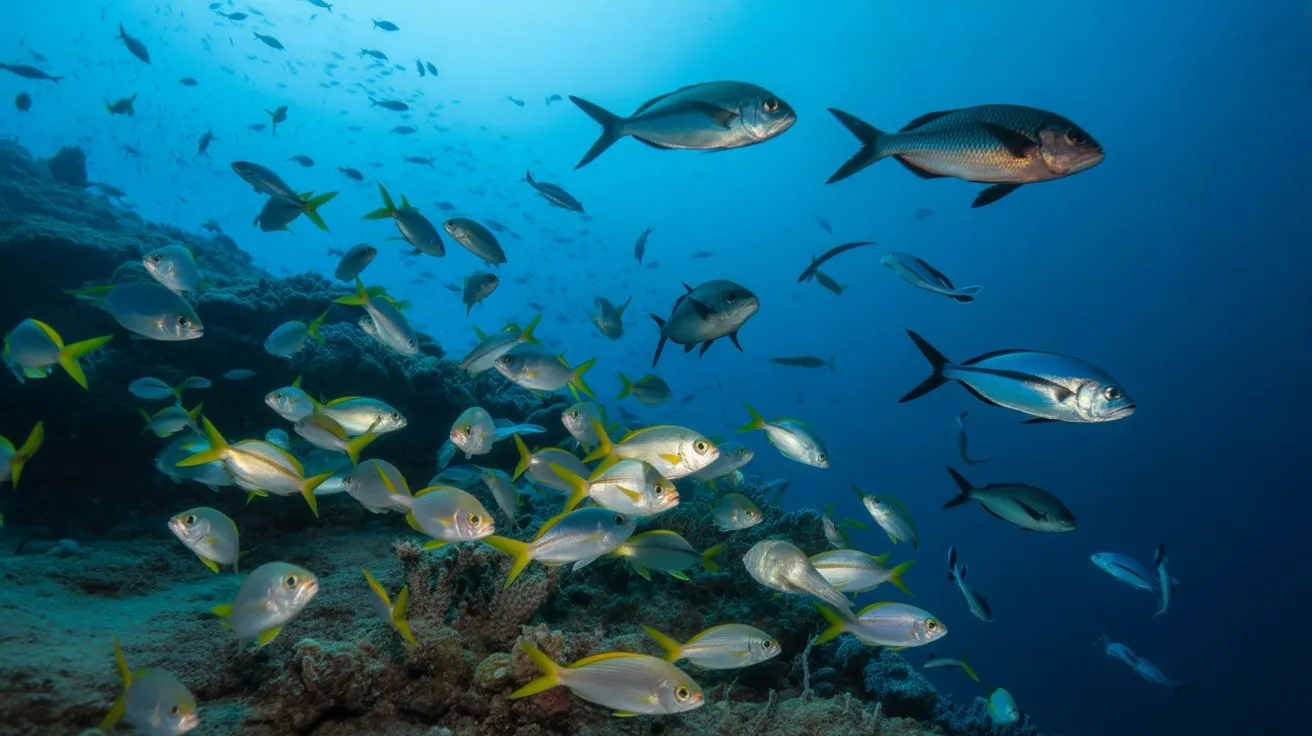
Since foraging opportunities differ dramatically between reef and pelagic environments, you’ll find that feeding strategies have evolved along distinct pathways optimized for resource acquisition.
Reef fish exhibit specialized feeding mechanisms targeting sessile invertebrates, algae, and small mobile prey within complex three-dimensional structures. You’ll observe grazing parrotfish scraping algae, butterflyfish extracting coral polyps with elongated rostra, and cleaner wrasses removing parasites from host species.
Open ocean fish demonstrate pelagic feeding adaptations for capturing planktonic organisms and fast-moving prey. Tuna species utilize ram feeding and high-speed pursuit tactics, while filter-feeding mechanisms in whale sharks enable massive zooplankton consumption.
Vertical migration patterns allow pelagic species to exploit deep-water prey resources during nocturnal feeding periods, maximizing energy acquisition across oceanic water columns. Additionally, the impact of overfishing on fish populations can disrupt these feeding dynamics, leading to significant changes in marine ecosystems.
Habitat Preferences and Territorial Behavior

While reef environments create densely packed ecological niches that promote intense territorial competition, pelagic habitats exhibit vastly different spatial dynamics that influence behavioral patterns.
You’ll observe reef fish establishing and defending specific territories ranging from 0.5-50 square meters, with damselfish showing 85% site fidelity rates. These fish aggressively patrol boundaries using visual displays and physical confrontations to protect feeding areas and breeding sites.
Conversely, open ocean fish exhibit nomadic behavior patterns spanning thousands of kilometers. You won’t find territorial establishment among pelagic species like tuna or marlins, as they follow prey migrations and temperature gradients.
Their schooling behaviors maximize predator avoidance rather than resource defense. This fundamental difference reflects energy allocation strategies: reef fish invest energy in territory maintenance, while pelagic species optimize locomotion efficiency. Additionally, coral reefs provide critical habitats for various marine species, influencing the distribution of reef-associated fish.
Predator Avoidance and Defense Mechanisms
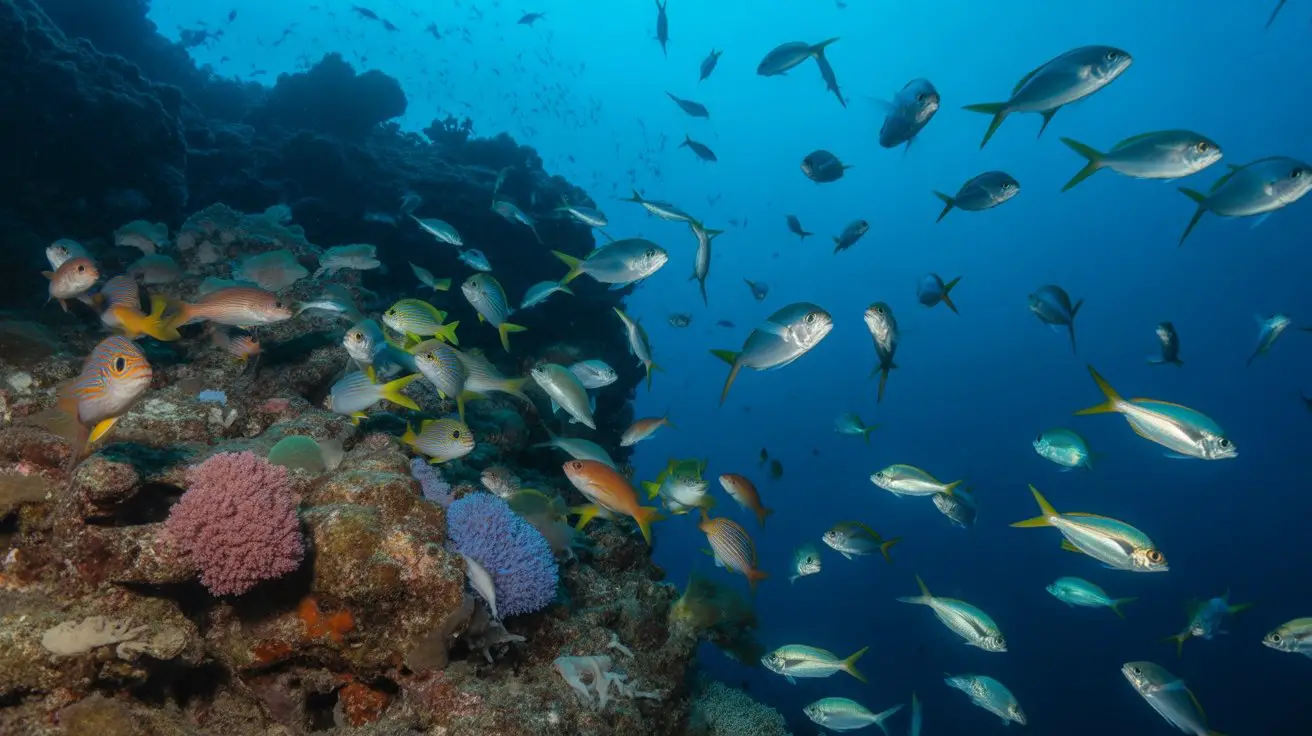
These contrasting habitat strategies directly influence how reef and open ocean fish have evolved distinct predator avoidance mechanisms. You’ll observe that reef fish utilize complex three-dimensional structures for shelter, employing cryptic coloration and rapid darting movements between coral formations. Conversely, open ocean fish rely on speed, schooling behaviors, and counter-shading for protection in vast, unobstructed waters. Additionally, the presence of herbivorous grazers in reef ecosystems helps maintain a balance that supports the diverse habitats where reef fish seek refuge.
| Defense Mechanism | Reef Fish | Open Ocean Fish |
|---|---|---|
| Primary Strategy | Shelter-seeking, hiding | Speed, endurance swimming |
| Coloration | Cryptic, disruptive patterns | Counter-shading, silvery |
| Group Behavior | Territorial, solitary | Large schools, coordinated movement |
| Escape Response | Short bursts, quick concealment | Sustained high-speed swimming |
You’ll notice these adaptations reflect each environment’s unique predation pressures and available refuge options.
Reproduction and Life Cycle Differences
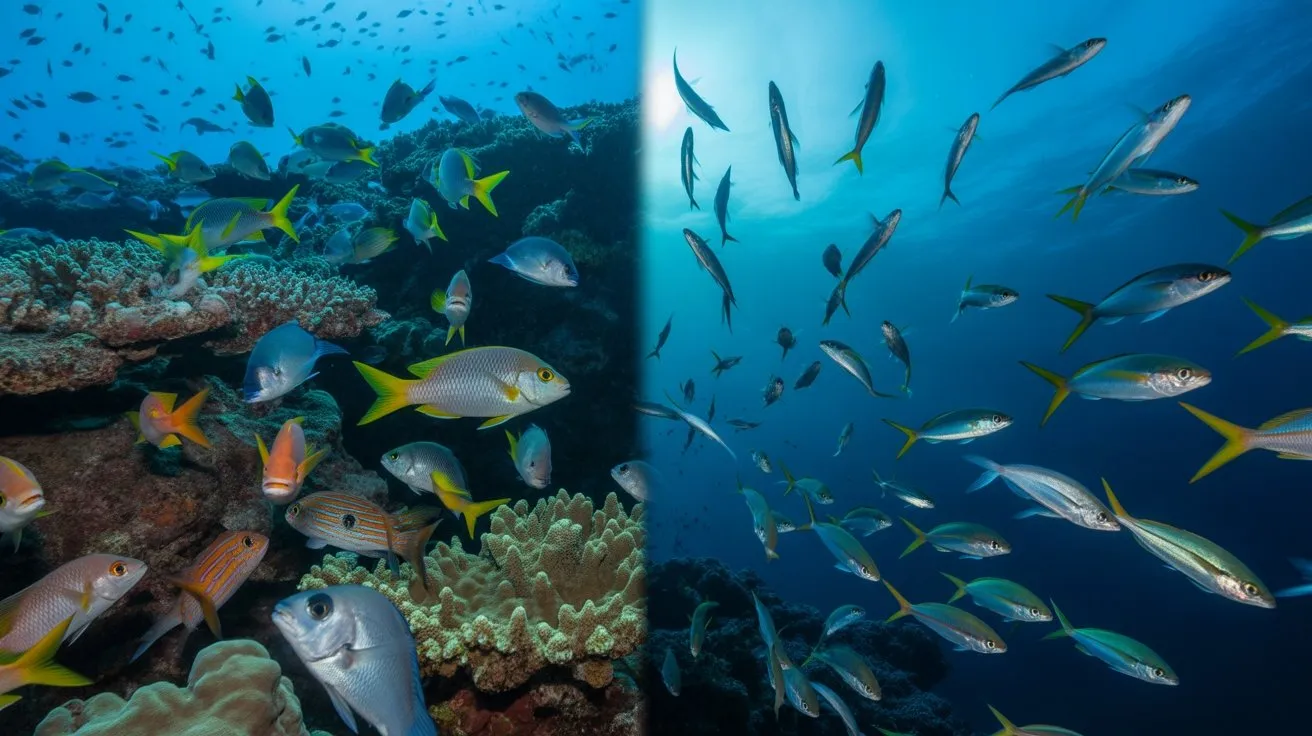
As predator avoidance strategies demonstrate environmental adaptation, reproductive patterns between reef and open ocean fish reveal equally dramatic evolutionary divergence shaped by habitat constraints.
You’ll observe that reef fish typically exhibit site-specific spawning behaviors, utilizing coral structures for nest protection and parental care. Conversely, open ocean species employ broadcast spawning strategies, releasing massive quantities of pelagic eggs into currents.
Key reproductive distinctions include:
- Spawning frequency: Reef fish spawn multiple times annually in small batches, while pelagic species often spawn seasonally in enormous quantities.
- Parental investment: Reef species provide extensive nest guarding and fry protection versus minimal pelagic parental care.
- Larval development: Reef fish larvae settle quickly near natal sites, whereas oceanic larvae drift extensively before metamorphosis.
These strategies reflect each environment’s unique selective pressures and resource availability, highlighting the crucial role of coral reefs in supporting diverse marine life and their reproductive success.
Evolutionary Adaptations to Environmental Pressures
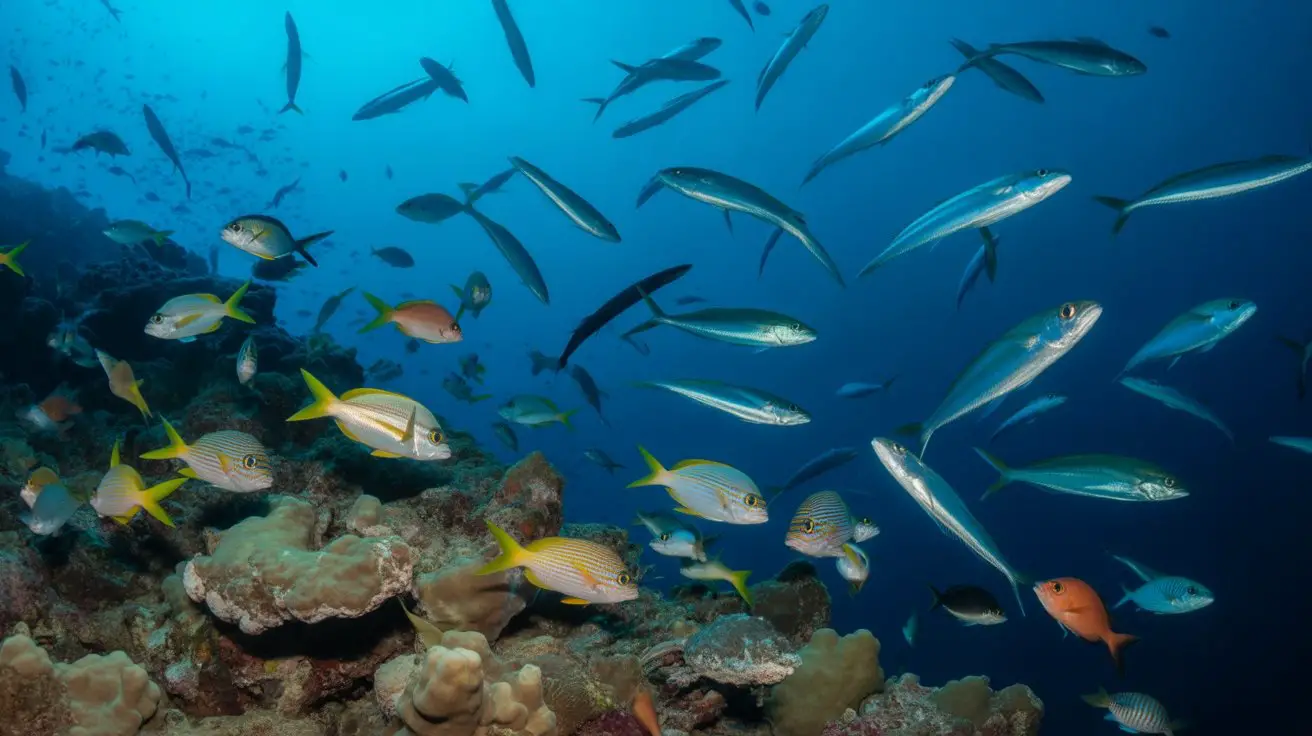
Reproductive strategies represent just one facet of the extensive evolutionary responses that distinguish reef and open ocean fish populations.
You’ll observe that reef species developed enhanced visual systems, processing complex color patterns and ultraviolet wavelengths within coral environments. Their laterally compressed bodies and specialized fin configurations enable precise maneuvering through intricate reef structures.
Conversely, open ocean fish evolved streamlined fusiform bodies reducing drag coefficients by 40-60%. They’ve developed enlarged hearts and gill surface areas, increasing oxygen extraction efficiency for sustained swimming.
Pelagic species exhibit counter-illumination camouflage and silvered scales reflecting 90% of incident light. Reef fish display territorial behaviors and site fidelity, while oceanic species demonstrate extensive migration patterns spanning thousands of kilometers, utilizing magnetic field navigation systems. Additionally, these adaptations highlight the crucial role of predator-prey relationships in maintaining ecosystem balance.
Conclusion
You’ve observed how reef and open ocean fish evolved distinct anatomical and behavioral adaptations. While you might think these differences represent rigid categories, remember that some species exhibit intermediary characteristics, demonstrating evolution’s complexity. Your understanding of laterally compressed reef fish with burst swimming capabilities versus streamlined pelagic species with sustained locomotion reveals fundamental biomechanical trade-offs. These morphological divergences directly correlate with habitat pressures, feeding strategies, and predator-prey dynamics you’ll encounter when studying marine ecosystems.
